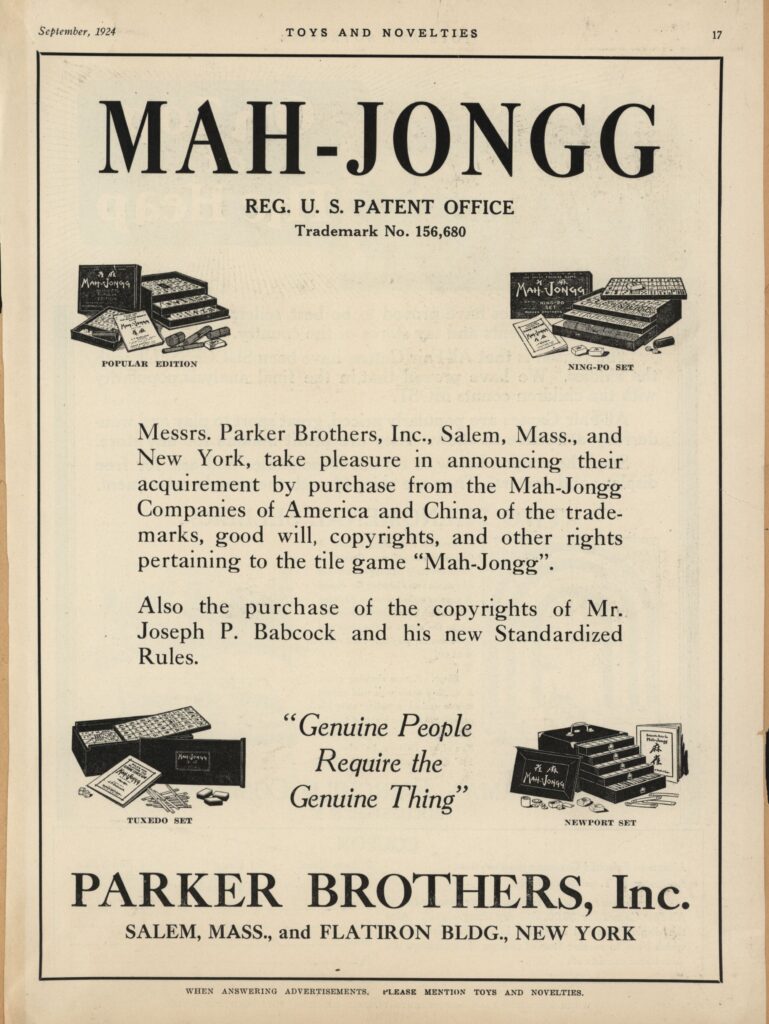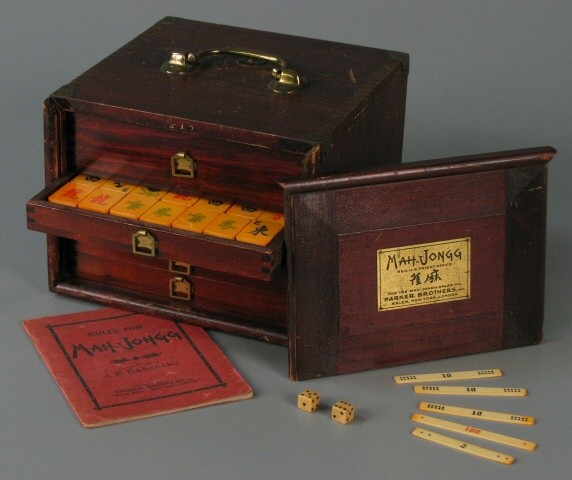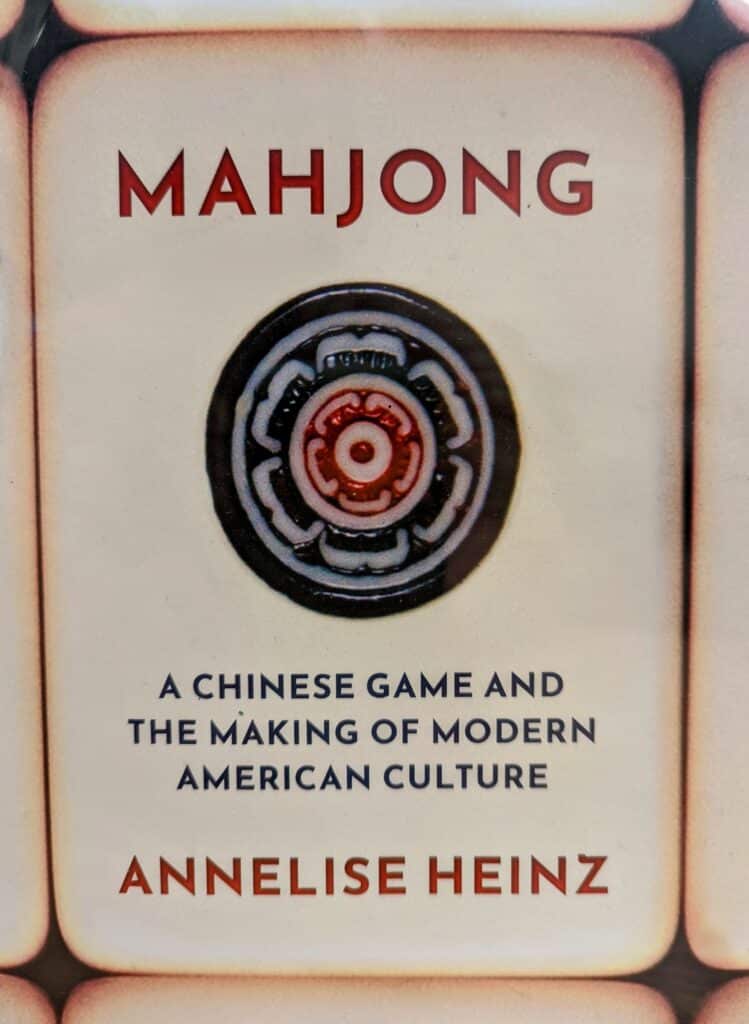When the film adaptation of Kevin Kwan’s hit book Crazy Rich Asians came out in 2018, I knew I’d have to watch it on the big screen. (A charming romantic comedy starring several of my favorite actors in beautiful Singapore? Yes, please!) Of course, I loved the movie, and—no spoilers—I was totally awestruck by the third act’s mahjong scene. The airy, bright mahjong parlor where the film’s protagonist, Rachel, meets her boyfriend’s imposing mother is peaceful and quiet, with only the persistent click, clack of mahjong tiles throughout the space. I had previously read about the importance of this game to Asian communities in Amy Tan’s The Joy Luck Club, but I had never actually watched how it’s played.

The Chinese tile-matching game mahjong (also spelled “mah-jongg”) enjoyed an immense spike in popularity in the United States and Europe during the early 1920s. A set of rules published in 1923 by Joseph P. Babcock (known as “The Red Book”) simplified the game for Americans and led to the spread of mahjong to Western audiences. Parker Brothers was the first of many game publishers to capitalize on the craze, purchasing the copyrights to Babcock’s rules. Though the game’s ubiquity waned in the following decade, the National Mah Jongg League (a group of women in New York and other major cities) kept the tradition alive for later generations by standardizing its rules.
At its core, mahjong is a fast-paced game of chance and skill played by four people with 144 tiles. Mahjong sets often also include counters to keep score, dice for deciding how to deal the tiles, and a marker to indicate the dealer and round. The American variation of mahjong utilizes score cards, eight all-purpose tiles called jokers, and several distinct gameplay mechanics. Players are dealt a number of pictographic tiles of different suits, and they take turns drawing and discarding tiles with the goal of making melds, or certain combinations of tiles. There are three main types of melds: a Pong (three identical tiles), a Kong (four identical tiles), and a Chow (three suited tiles of the same suit in numerical sequence). In 20th-century America, mahjong developed into both a popular leisure activity and a cultural form; it became associated in particular with Asian immigrant communities and Jewish American women.

For more than a decade, Dr. Annelise Heinz, a historian of modern America, has been researching and writing about mahjong. In 2021, Oxford University Press published her book project, Mahjong: A Chinese Game and the Making of Modern American Culture. During the course of her research, she conducted oral history interviews with several dozen people about their memories of mahjong and how the pastime was integrated into their cultures. After her book’s publication, Heinz, an Assistant Professor in the College of Arts and Sciences at the University of Oregon, donated the audio recordings of these oral histories to the Brian Sutton-Smith Library & Archives of Play to establish the Mahjong Oral History Collection. These rich, story-filled oral histories are accessible online to researchers through the museum’s Preservica-Universal Access portal.

Throughout the materials in the Mahjong Oral History Collection, participants discuss memories involving the game (especially during the post-WWII era), including how they learned to play and the influence of mahjong as a middle-class leisure activity. The knowledge of mahjong often is passed down from generation to generation. (During the mahjong scene in Crazy Rich Asians, Rachel says, “My mom taught me how to play. She told me mahjong would teach me important life skills: Negotiation. Strategy. Cooperation.”) These oral history interviews donated by Dr. Annelise Heinz are incredible primary source materials filled with details for anyone interested in this high-speed game—and the communities which it has impacted.


